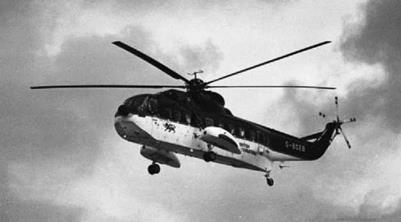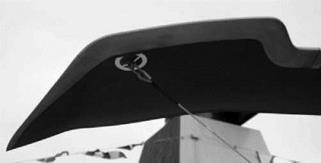Blade Tip Shapes
6.1.1 Rectangular
Performance of a rotor blade is governed, naturally, over its entire length. The tip region, however, plays a very influential role in the blade’s aerodynamic character. For most of its formative years the helicopter rotor blade possessed a uniform blade chord out to the tip giving it a rectangular planform. A typical example is shown in Figure 6.6. The blade usually has a set of weights firmly fixed at the tip end for blade track and balance adjustments to be carried out. These are normally covered by a tip cap which covers these weights and restores an aerodynamically clean shape to the blade tip. For symmetric aerofoils, it is often a surface of revolution about the chordline.
6.3.2 Swept
The first move away from the rectangular blade planform was the inclusion of sweep in the tip region. It was abrupt and the sweep angle was constant. This is aimed at the advancing blade tip where high Mach numbers will be encountered at the higher forward speeds. The rearward
|
Figure 6.6 Rectangular blade planform of S61NM helicopter |
movement of the blade chord at the tip end of the blade will require careful design as the lift centre for the tip and the local centre of gravity will now be behind the blade pitch axis and its shear centre. This will open up the possibility of blade flexing in pitch which can cause aeroelastic problems. An example of this type of tip planform is shown in Figure 6.7.
|
|
|
Figure 6.8 Merlin main rotor blade tip (BERP) |














